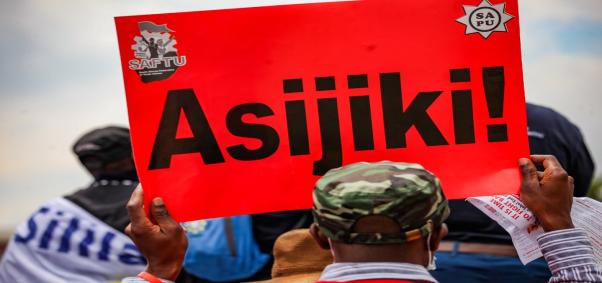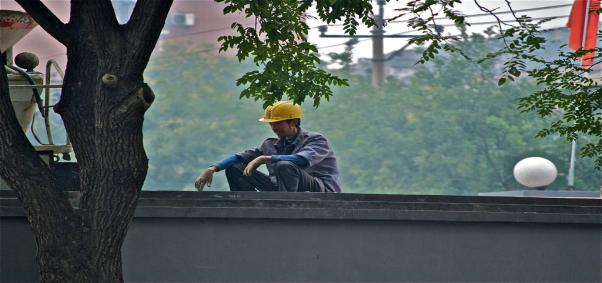
This article was published in CNN Money on October 7, 2016.
Felipe Calderón is the former President of Mexico and the chair of the Global Commission on the Economy and Climate.
One of the few things that both Hillary Clinton and Donald Trump agree on is that the United States needs to spend more on infrastructure. That's because America's roads, rails, and pipes are in dire need of an upgrade. The American Society of Civil Engineers estimates that $3.6 trillion of investment is necessary by 2020.
Infrastructure underpins all economic activity, from growing our food, to powering our smartphones, to traveling to work. Increased infrastructure spending can substantially boost economic growth. In advanced economies, there's evidence that 1% of GDP spent on infrastructure can lead to a 1.5% increase in GDP within 4 years.
But, given the rate at which greenhouse gas emissions are accumulating, the type of infrastructure we build matters more than ever. Building a solar plant is better than building a coal plant. Building a light rail line is better than expanding a highway. Traffic congestion and sprawling cities are already estimated to cost the U.S. economy about $1 trillion per year. This is on top of the infrastructure that is increasingly needed to adapt to the effects of climate change, for instance, solid flood defense systems that can hold back seas that are rising and threatening coastal cities due to climate change.
The entire world, not just America, needs to invest in strong, sustainable infrastructure: it is key to getting us the growth we need; building a more inclusive future; and protecting us from the effects of a warming world.
We have a choice in the next few years. Invest in the dirty, unhealthy, and unsustainable infrastructure of the past, or leap forward to the clean, efficient, and affordable infrastructure of the future. Either way, we will be building over the next 15 years more infrastructure than currently exists on the planet. Sustainable infrastructure is now much cheaper than just a few years ago and any added upfront costs can be offset by reduced operating costs, such as fuel expenses, over a project's lifecycle. The high carbon infrastructure alternatives make no sense at all.
The choice should be easy. The costs of solar and wind are plummeting, and last year, every government in the world gathered in Paris and agreed to move to a world with net zero fossil fuels by the end of the century. However, the equivalent of 1,500 coal plants are still under construction or in planning worldwide.
Why aren't we already investing the way we should? One important reason is that financing sustainable infrastructure is challenging. In some countries, a single project can take dozens of finance institutions and up to a decade to prepare. Private investors are often looking for risk-adjusted returns of 10-15%, a rate that is already difficult to meet with regular infrastructure projects. Green infrastructure, relying on newer technologies, often carries higher perceived risk, which further raises the cost of finance upfront, even if it saves money later.
To overcome these barriers, we need an action plan for financing sustainable infrastructure. We need to rethink our public investment priorities and our financial system.
For one, governments need to get rid of fossil fuel subsidies and put a price on carbon. It doesn't make sense to be incentivizing new dirty infrastructure when the Paris Agreement makes clear that those assets will soon be stranded. Much of the private sector already understands the logic. More than 1,200 companies use internal carbon pricing to guide their investment decisions or plan to implement it soon. When you add the fact that outdoor air pollution associated with fossil fuels kills nearly 2 million people a year worldwide, it's a no brainer.
Second, we need to invest in investment. That is, strengthen policies and institutions that can deliver a pipeline of sustainable projects. All countries need development strategies for low-carbon and climate-resilient infrastructure, both at the national and subnational levels. Also, we will need to use public funds strategically. In advanced economies, around 40% of the cost of infrastructure projects is financed by public resources, while in developing and emerging economies it's around 60-65%. When used strategically, public finance can take on some of the initial costs and share some of the risks to help crowd in more private finance.
Third, we need to transform the financial system to deliver the scale and quality of investment needed. We must change the financial culture to emphasize sustainable long-term investments over a narrow focus on short-term gains. Business cycle and credit cycles are too short to fully take into account the future impacts of climate change. To help companies internalize the new landscape, governments should ask companies to report their exposure to financial risks associated with climate change. This will also give shareholders more of an opportunity to push companies to consider the environmental implications of their investments.
Fourth, we need to ramp up investment in clean technology innovation. Investing in new technologies and practices can significantly reduce the upfront costs of sustainable infrastructure over the long-term.
Beyond the speeches, the next President of the U.S. will have to hit the ground running and this action plan could help accelerate results and start creating the low-carbon jobs that Americans deserve. After almost a decade of low growth, the New Climate Economy can deliver the results that dysfunctional protectionism won't. This plan will not only reignite economic growth, it will foster a new era of cleaner growth, of fairer growth, of better growth; along with a better climate.






